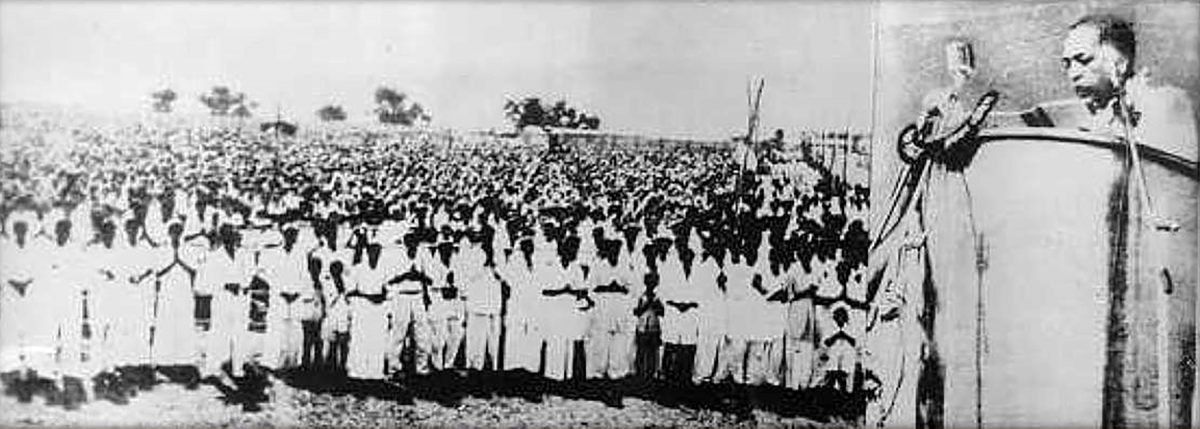
History

Dr. Babasaheb Ambedkar had declared in 1935 that although he was born as a Hindu he would not die as one, as conversion was the solution to abandon the caste system. After this declaration, he extensively studied the doctrines of all the major religions to choose Buddhism for himself and his followers.
Buddhism was 2,550 years old in 1956, so it was notable year for global celebration and 14 October was the traditional date of conversion of greatest Buddhist King, Ashoka Maurya, the celebration of Ashok Vijaya Dashmi. He selected Nagpur for his conversion ceremony, as he explained in his speech at that occasion, because Nagpur was the homeland of ‘Nag’ people who embraced Buddhism, supported it with great efforts in its early period, and propagated it throughout India. Ground near the Ramdaspeth area in Nagpur was selected for the ceremony.
On 14 October 1956, Dr. Babasaheb Ambedkar and his wife took the oath of Three Jewels and Five Precepts from the Burmese monk Mahasthavir Chandramani from Kushinagar. Dr. Babasaheb Ambedkar then gave the oath of Three Jewels, Five Precepts, and 22 Vows to his thousands of followers. In this way, Nagpur became the birthplace of Neo Buddhist movement.
Dr. Babasaheb Ambedkar Ambedkar died on 6 December 1956, one and a half months after the Deeksha ceremony. However, this ceremonial conversion continued after his death, converting 15-20 million by March 1959. After his death the ‘Param Pooja Dr. Ambedkar Smarak Samiti’ (Dr. Ambedkar Memorial committee) was organized for the management of Deekshabhoomi. The committee decided to build a stupa at the place as a monument of that ceremony and a mass conversion of people to Buddhism.